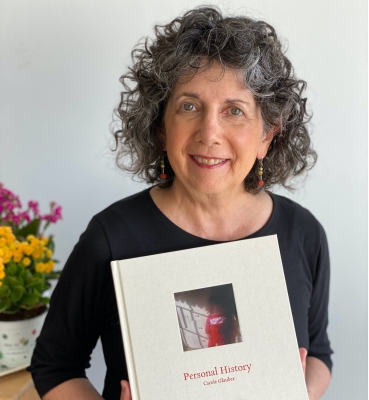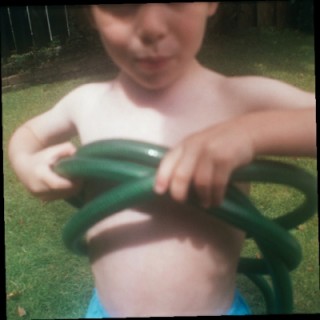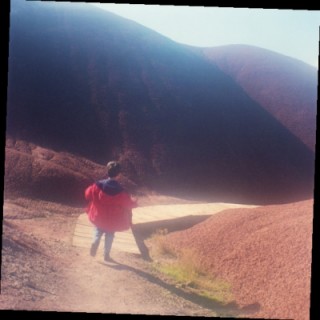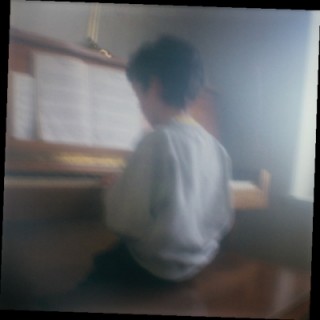A Photographer Presents a Unique Personal History
Over the past few in-and-out-of-lockdown months, I've started to sort through a stack of old photographs and put them into existing or new albums. It's taking me longer than anticipated as I'm constantly being waylaid by memories. How evocative the photos are of a time and place in the past, not only of my own increasingly distant childhood, but also my children's early years in London, before we made aliyah in 1994. These images are all, literally, part of another life. And, of course, so much has changed in personal family photography over the past decade. Today, moments are captured by digital cameras or phones and shared instantly via WhatsApp or a link online. While it's wonderful to see my children and grandchildren almost daily through this medium, especially when I can't be with them in person, it's not quite the same as leafing through an album with a range of photos laid out in front of you, poring over details and feeling that sense of closeness as you touch a print.
So this is the perfect time to appreciate Personal History, a new book by award-winning photographer and photo historian Carole Glauber. The beautifully produced book is a collection of unique photographs of her two sons taken over a 30-year period with a 1950s Kodak Brownie Hawkeye camera. In December 2020, Personal History received a gold medal from the Budapest International Foto Awards. Presented chronologically, the photographs show the two boys growing up as the reader turns each page.
Glauber studied history in college and asked for a 35mm camera as a graduation gift. Subsequently, she received a master's degree in education to teach students with learning disabilities. Just before graduate school, she took her first photography classes and learned to work in the darkroom. Later, when she lived in San Diego, she was a volunteer at the Museum of Photographic Arts. In 1987 she moved to Portland, Oregon, with her husband Harry and one-year-old son, Ben.
"I was feeling somewhat adrift," Glauber recalls, perhaps echoing how many of us have been feeling this past year. "I knew just one person who lived across town. My camera was broken and in the repair shop. After so many years working with black and white film and spending hours in my darkroom, I suddenly had no darkroom, and I was home with my son, feeling lost. That state of mind is a time of vulnerability, but it can also create the possibility of trying something new. And that is what happened."
It was while Glauber was struggling to settle into her new surroundings that such a possibility presented itself right there in her new home.
"A 1950s Kodak Brownie Hawkeye camera from a thrift shop sat on a shelf in our house. I decided to see if film was still available. I went to a camera store and discovered that Kodak still made 620 film for this camera, so I bought 10 rolls. The clerk told me I needed 620 spools for winding the film in the camera and produced some for me from behind the counter."
It was to be a new and sometimes difficult process. "Color was new for me, but that was not all that was new," says Glauber. "I was photographing my little boy with this slow clunky camera. Instead of looking straight ahead, I was looking down into a tiny viewfinder, where everything was reversed. There was a lot of failure. Many times prints were returned to me with nothing or next to nothing. There was not enough light, or too much movement. There were so many things that could go wrong."
Glauber took her first exposed rolls to the camera shop for processing and decided on impulse to ask for small prints instead of contact sheets – which turned out to be the simple but brilliant choice.
"Looking at my little prints, I felt I had found something special, something unique. The years of watching and waiting to make street photographs and carefully making portraits all prepared me to photograph Ben with this camera. I thought about how everything we do becomes the platform on which to build the next thing. That November, one of my first results was Ben in Shadow."
That photograph is on the cover of the book, and is the first image in it. All the photographs are in color. The camera choice contributed to the dream-like quality and distinctive hazy look in Glauber's images. The Kodak Brownie Hawkeye box camera was developed in the late 1940s and the soft focus from the uncoated one-element lens is a vintage look, suggesting a time passed, a moment distilled to a memory.
In September 1993, the Glaubers' younger son Sam was born and he became part of the photographs, adding new insights and experiences.
Glauber's work has been included in many group and solo exhibitions worldwide, and she has received numerous awards for her photography and photographic research. She is the author of Witch of Kodakery: The Photography of Myra Albert Wiggins 1869–1956.
At what point did she think that the photograph collection could be published as a book? "For a number of years I'd thought it would be an interesting book and when Daylight Books approached me about the possibility, I decided to do it. I selected the photographs, but consulted with the book designer."
Glauber also had the idea of asking Ben and Sam, who are now both married and living in Israel, to each write an essay about their experience and feelings of being photographed by their mother for so many years. "Usually when people are in photographs they don't have a voice, so I wanted to give that voice to them," she says. "I always felt that this project was a collaboration between me and my sons." The essays add another layer to the story and allow the boys a final word in the book.
Carole and Harry Glauber made aliyah three years ago and today they live in Raanana. Their sons' stories are documented in Personal History by a photographer who also happens to be their mother; yet one of photography's great gifts as a medium is that by providing a glimpse of someone else's narrative, the viewer is in essence borrowing bits and pieces of someone else's story, to remind and springboard into parts of one's own narrative, buried away and suddenly unearthed to the light of day.
Copies of Personal History, are available from Carole at This email address is being protected from spambots. You need JavaScript enabled to view it.












Comments 1
I enjoyed your article about my daughter in law Carole very much. Also, I wonder whether, in preparing your book on Jewish Day School in NW London, you interacted with my sister-in-law Rochelle ISRAEL
Dennis Glauber